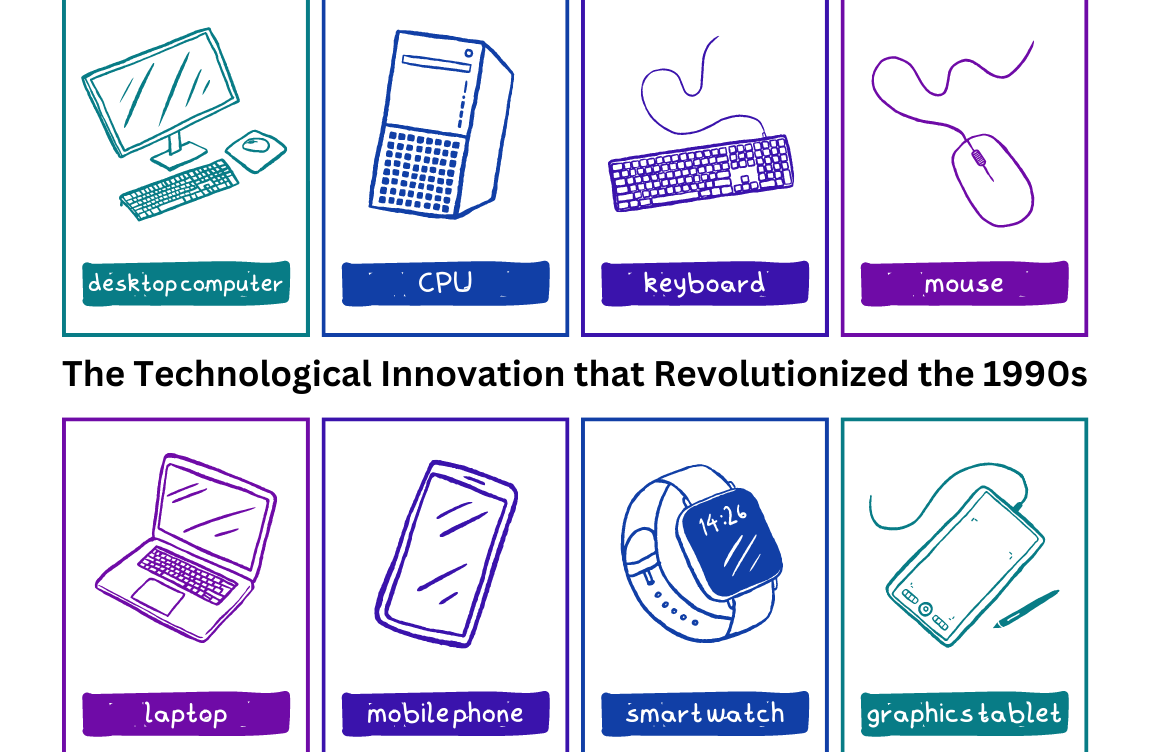
The Technological Innovation that Revolutionized the 1990s
Introduction
The 1990s marked a pivotal era in the realm of technological innovation. During this decade, the world witnessed the rise of numerous groundbreaking technologies that not only transformed the way we live but also paved the way for the digital age we inhabit today. One particular innovation emerged as a game-changer, garnering widespread acceptance and changing the course of history. In this article, we delve into the technological marvel that defined the 1990s: the World Wide Web.
The Birth of the World Wide Web
In the early 1990s, a British computer scientist named Tim Berners-Lee introduced the concept of the World Wide Web. His visionary idea revolved around creating a decentralized system of interconnected documents that could be accessed using hyperlinks. This innovation aimed to connect information across the globe, allowing people to share and access data seamlessly. The World Wide Web was not merely a technological advancement; it was a revolutionary concept that ignited the digital revolution.
From Modems to Broadband: Changing Connectivity Landscape
During the early 1990s, internet connectivity was largely limited to the use of dial-up modems. While revolutionary at the time, these modems offered sluggish speeds and tied up phone lines. However, as the decade progressed, a significant shift occurred with the introduction of broadband technology. Broadband provided high-speed internet access, enabling users to browse websites, stream media, and communicate online without the frustration of slow connections. This shift in connectivity laid the foundation for the internet-dependent lifestyle we lead today.
The Dot-Com Boom: E-Commerce and Online Businesses
One of the most remarkable outcomes of the widespread acceptance of the World Wide Web was the emergence of the dot-com boom. This period saw a surge in the establishment of online businesses, commonly referred to as “dot-coms.” Companies like Amazon, eBay, and Yahoo set the stage for e-commerce, reshaping traditional retail models and paving the way for online shopping. The dot-com boom also led to unprecedented growth in the stock market, as investors rushed to capitalize on the potential of the digital economy.
Social Media: Connecting the World Virtually
While the 1990s predominantly laid the groundwork for the technological advancements of the future, seeds were sown for the eventual rise of social media platforms. Early platforms like Six Degrees allowed users to create profiles and connect with friends, foreshadowing the social networking explosion that would come later. The concept of virtual social connections gained traction, setting the stage for platforms like Friendster, MySpace, and eventually, the social media giants of today, such as Facebook, Twitter, and Instagram.
Mobile Revolution: The Rise of Cellular Phones
Although the 1990s is often associated with the internet boom, it’s essential to acknowledge the simultaneous rise of cellular phones. While cell phones existed before the decade, the 1990s witnessed a significant shift from large, clunky devices to more compact and user-friendly models. Nokia’s iconic “brick” phones paved the way for smaller, more portable devices, marking the initial steps toward the smartphone-dominated world we know today.
Digital Entertainment: Gaming and Multimedia
The 1990s saw remarkable innovations in the realm of digital entertainment. The rise of CD-ROM technology led to immersive gaming experiences and interactive multimedia content. Video game consoles like the Sony PlayStation and the Nintendo 64 introduced 3D graphics and immersive gameplay, captivating a global audience. This era also witnessed the advent of digital music formats, with the introduction of the MP3 format revolutionizing the way people consumed music.
Search Engines: Navigating the Expanding Web
As the internet expanded rapidly during the 1990s, the need for efficient navigation became apparent. This gave rise to search engines like Yahoo, AltaVista, and eventually, Google. These search engines provided users with the ability to search for specific information amid the vast sea of web pages. Google’s algorithmic approach to search revolutionized the way users found relevant content, solidifying its dominance in the search engine landscape.
Evolving Web Design: HTML and Beyond
The 1990s witnessed the evolution of web design languages, with HTML (Hypertext Markup Language) emerging as the foundation of web page creation. Websites began as text-heavy and relatively simple pages. However, advancements in web design led to the incorporation of images, multimedia elements, and interactive features. This evolution laid the groundwork for the visually captivating and user-friendly websites we encounter today.
Online Communication: Instant Messaging and Email
The concept of online communication evolved significantly during the 1990s. Instant messaging platforms like ICQ and AOL Instant Messenger introduced real-time text-based communication, enabling users to connect with friends and family across the globe instantly. Additionally, email became a staple of online communication, replacing traditional postal mail and revolutionizing business communication.
Legacy and Conclusion
The 1990s stands as a transformative decade in the history of technological innovation. The widespread acceptance of the World Wide Web catalyzed a series of advancements that reshaped the world as we know it. From changing the way we shop, communicate, and access information to revolutionizing entertainment and business, the innovations of the 1990s set the stage for the digital age we inhabit today. As we reflect on the remarkable progress made during this era, it becomes evident that the 1990s laid the foundation for the technological wonders that continue to shape our lives.
